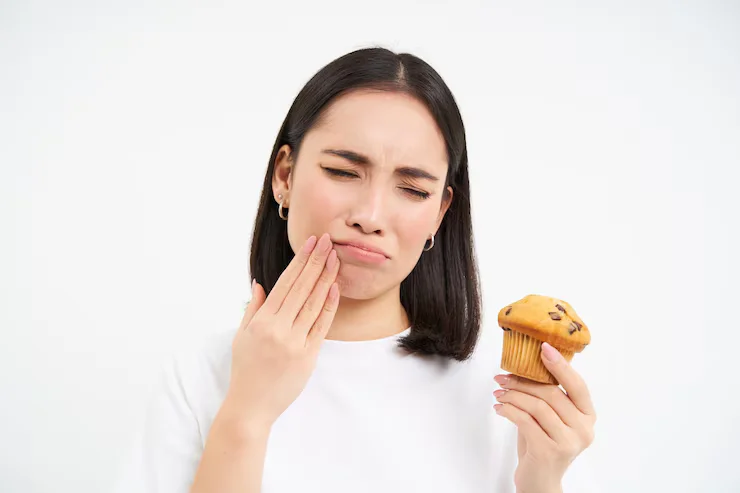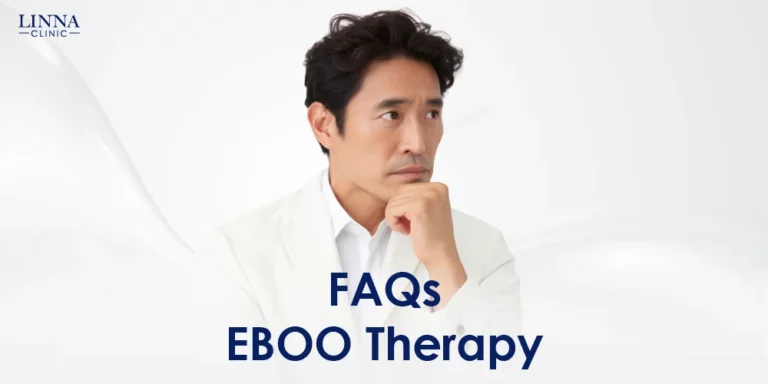High blood pressure (Hypertension) is a health condition affecting 1 in 5 of Thais. Often referred to as the “silent killer,” it typically shows no obvious symptoms until it reaches a severe stage, leading to chronic diseases that can cause disability or death. Maintaining normal blood pressure levels is crucial. LINNA Clinic invites you to understand: What is high blood pressure (hypertension)? What symptoms indicate high blood pressure (hypertension)? How to take care of yourself and alternative medicine options for managing high blood pressure (hypertension) without using any medication.What symptoms indicate that you might have high blood pressure? With self-care methods and options for reducing high blood pressure through alternative medicine without the use of medication.
Table of Contents
What is High Blood Pressure (Hypertension)?
High blood pressure (Hypertension) is a condition where the force of your blood against your artery walls is consistently higher than normal. A normal blood pressure reading is typically 120/80 mmHg. However, individuals with high blood pressure often have readings of 140/90 mmHg or higher. There are two main types of hypertension:
- Primary Hypertension This is the most common type, accounting for about 95% of cases. It often develops gradually over many years and may not show symptoms until it reaches a severe stage.
- Secondary Hypertension This is less common and tends to have a more sudden onset. It is usually caused by an underlying medical condition, such as kidney disease, adrenal gland disorders, hormonal imbalances, or the use of certain drugs or substances.
Are you experiencing high blood pressure (hypertension)? Check these symptoms
Generally, high blood pressure often doesn’t show clear warning signs until it reaches a severe stage. However, there may be some early symptoms associated with the condition, such as:
- Dizziness, lightheadedness, and frequent nausea or vomiting
- Headaches, especially at the back of the head
- Fatigue, palpitations, and unusual tiredness
- Difficulty sleeping or sleep disturbances
- Blurred vision or difficulty seeing clearly
- Numbness in the hands and feet
- Nosebleeds
Checking Your Blood Pressure
If you experience any of these symptoms, you can monitor your blood pressure at home using a blood pressure monitor. It’s recommended to measure your blood pressure four times a day for at least 4-7 days and record the results. Here’s how to check your blood pressure:
- First measurement: Take your blood pressure after waking up and urinating. Wait one minute and take a second measurement.
- Second measurement: Take your blood pressure before going to bed. Sit and rest for 3-5 minutes before taking the first measurement. Wait one minute and take a second measurement.
If the average of your measurements is consistently above 140/90 mmHg, you may be at risk for high blood pressure. Consult a healthcare professional and provide them with your recorded blood pressure readings so they can diagnose the severity of your condition and recommend appropriate treatment.
What causes high blood pressure (hypertension)?
High blood pressure can result from a combination of factors. In over 95% of cases, it’s caused by:
- Age: The risk increases significantly after the age of 40.
- Genetics: A family history of high blood pressure increases your risk.
- Smoking and excessive alcohol consumption: These habits significantly contribute to high blood pressure.
- High-sodium diet: Consuming foods high in salt can increase blood pressure.
- Obesity: Being overweight or obese is a major risk factor.
- Chronic conditions: Conditions like high cholesterol, diabetes, kidney disease, and sleep apnea can contribute to high blood pressure.
- Lack of sleep and stress: Inadequate sleep and chronic stress can elevate blood pressure.
- Sedentary lifestyle: Lack of physical activity, such as sitting for long periods, can increase the risk.
Less common causes of high blood pressure include: Kidney disorders Adrenal gland tumors Endocrine disorders Pregnancy complications Certain medications, drugs, and chemicals
Basic care for people with high blood pressure (hypertension)
Lifestyle Modifications for Managing High Blood Pressure. Individuals with high blood pressure can effectively manage their condition by adopting these lifestyle changes:
- Balanced Diet: Consume a variety of foods, including plenty of fruits and vegetables.
- Limit Salty Foods: Reduce your intake of salty foods and processed foods high in sodium.
- Weight Management: Maintain a healthy weight.
- Regular Exercise: Engage in regular physical activity as recommended by your doctor.
- Sufficient Sleep: Aim for 6-8 hours of sleep per night.
- Stress Management: Practice relaxation techniques to manage stress.
Medication Adherence: If prescribed medication, take it as directed and keep track of your blood pressure.
Risks associated with high blood pressure (hypertension) If left untreated, high blood pressure can lead to serious complications affecting vital organs:
- Heart: Heart failure, thickened heart muscle, and coronary artery disease.
- Brain: Stroke, including ischemic stroke and hemorrhagic stroke.
- Eyes: Retinal damage, swelling, nerve damage, and vision loss.
- Kidneys: Chronic kidney disease.
How can alternative medicine help with high blood pressure (hypertension)?
While medication and lifestyle changes are essential for managing hig blood pressure, some people explore complementary therapies. LINNA Clinic offers alternative medicine and Ozone Therapy (EBOO+ Technique) approaches that can be used in conjunction with conventional treatments in order to clean the blood and blood vessle walls, which will help to lower the blood pressure and bring it back to normal rate. Consult with our experienced medical doctor who has done over 20,000 cases for a personalized evaluation and treatment plan.




